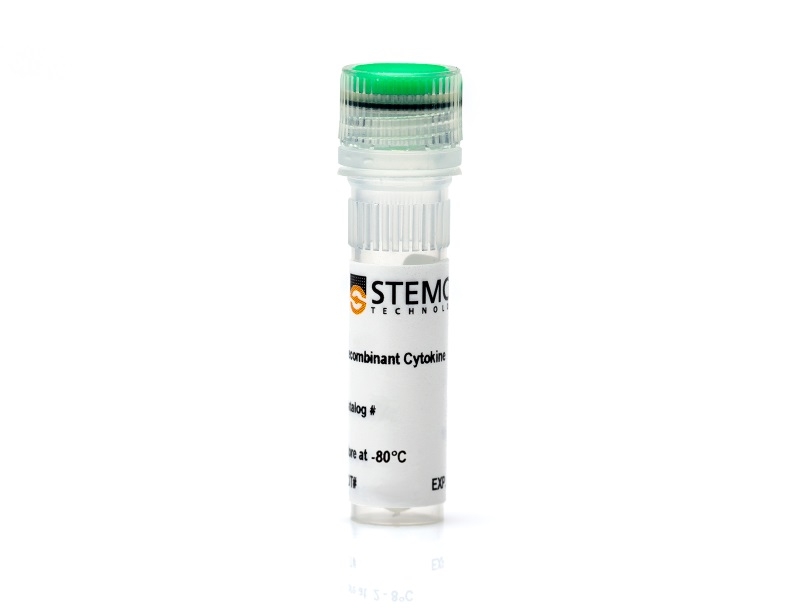Human Recombinant PF-4 (CXCL4)
Platelet factor 4
概要
Platelet factor 4 (PF-4), or CXCL4, is a member of the CXC chemokine family. It is produced by megakaryocytes, platelets, and cultured microglial cells (Kasper & Petersen; Wang & Huang). Although its receptors have not been fully characterized, PF-4 appears to affect p38/MAPK, PI3K/AKT, ERK, and JNK/c-Jun signaling pathways. PF-4 inhibits the development and maturation of megakaryocytes, and supports survival of hematopoietic stem and progenitor cells (Kasper & Petersen). PF-4 inhibits angiogenesis by suppressing endothelial cell proliferation and migration. It promotes inflammatory response through activation of granulocytes, T cells, and monocytes, which results in the release of oxygen radicals and cytokines, and induces phagocytosis. PF-4 stimulates NK cell migration, inhibits platelet coagulation, and together with TNF, PF-4 causes neutrophile degranulation (Kasper & Petersen; Wang & Huang).
Subtype
Cytokines
Alternative Names
CXCL4, Ironplact, Oncostatin A, Platelet factor-4, SCYB4
Cell Type
Hematopoietic Stem and Progenitor Cells, Monocytes
Species
Human
Area of Interest
Immunology, Stem Cell Biology
Molecular Weight
7.8 kDa
Purity
≥ 95%
技术资料
| Document Type | 产品名称 | Catalog # | Lot # | 语言 |
|---|---|---|---|---|
| Product Information Sheet | Human Recombinant PF-4 (CXCL4) | 78169, 78169.1 | All | English |
| Safety Data Sheet | Human Recombinant PF-4 (CXCL4) | 78169, 78169.1 | All | English |
数据及文献
Data

(A) The biological activity of Human Recombinant PF-4 (CXCL4) was tested by its ability to inhibit human FGF-basic-dependent proliferation of mouse NR6R 3T3 cells. Cell proliferation was measured using a fluorometric assay method. The EC50 is defined as the effective concentration of the growth factor at which cell proliferation inhibition is at 50% of maximum. The EC50 in the example above is less than 10 μg/mL. (B) 5 μg of Human Recombinant PF-4 (CXCL4) was resolved with SDS-PAGE under reducing (+) and non-reducing (-) conditions and visualized by Coomassie Blue staining. Human Recombinant PF-4 (CXCL4) has a predicted molecular mass of 7.8 kDa.



